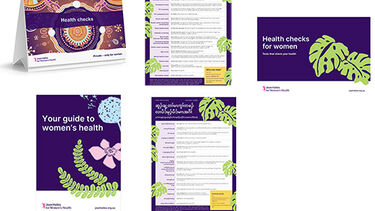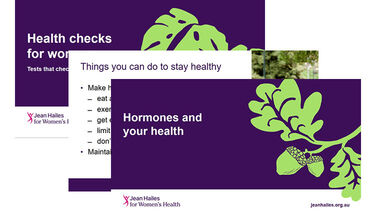Jean Hailes is a renowned and respected provider of high-quality, evidence-based, specialist women's health learning opportunities for health professionals.
As well as online courses and webinars we also provide practice support information, health professional tools to guide diagnosis and management of various conditions, presentations and printed resources.
We aim to improve access to education for health professionals across all sectors including metropolitan, regional and rural Australia. We continually review and revise the education, tools and resources we provide.






Evidence and medical knowledge is constantly changing. The authors have taken care to ensure that the information on this page is accurate and up to date at the time it was created. This content is intended for healthcare professionals who should always manage patients within their scope of practice and work within local policies and practices. This content is not intended for members of the general public.